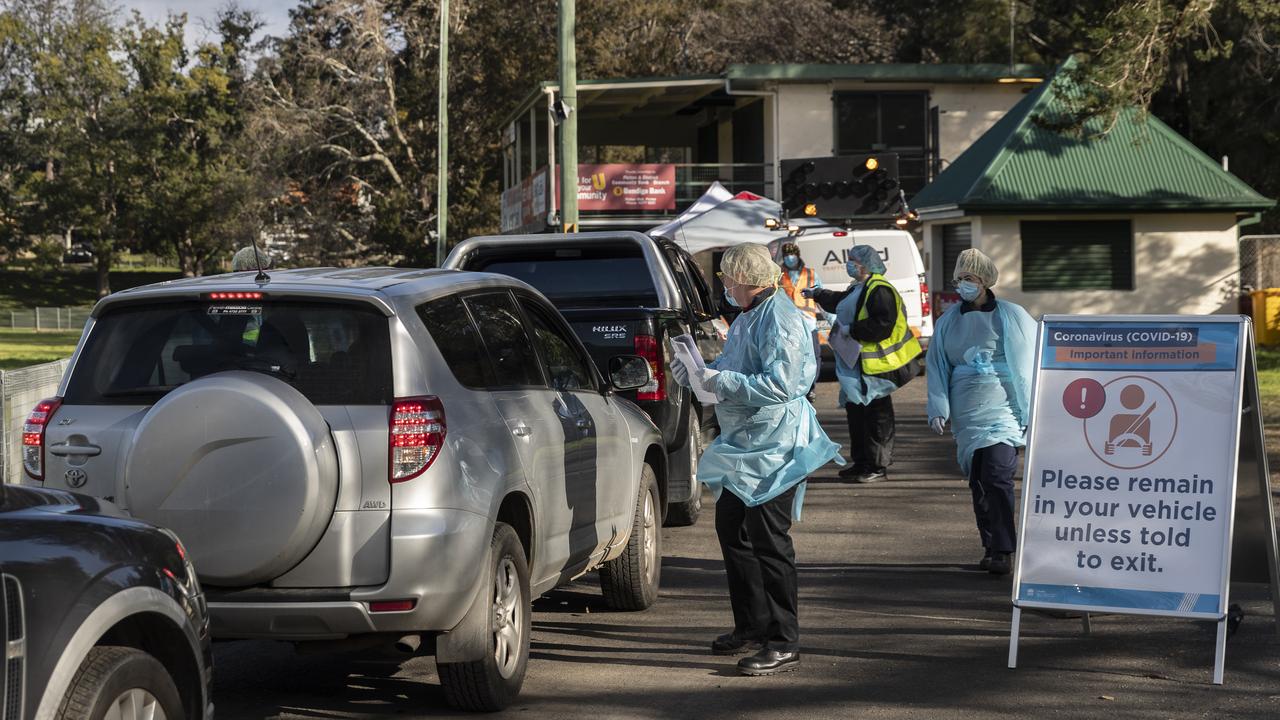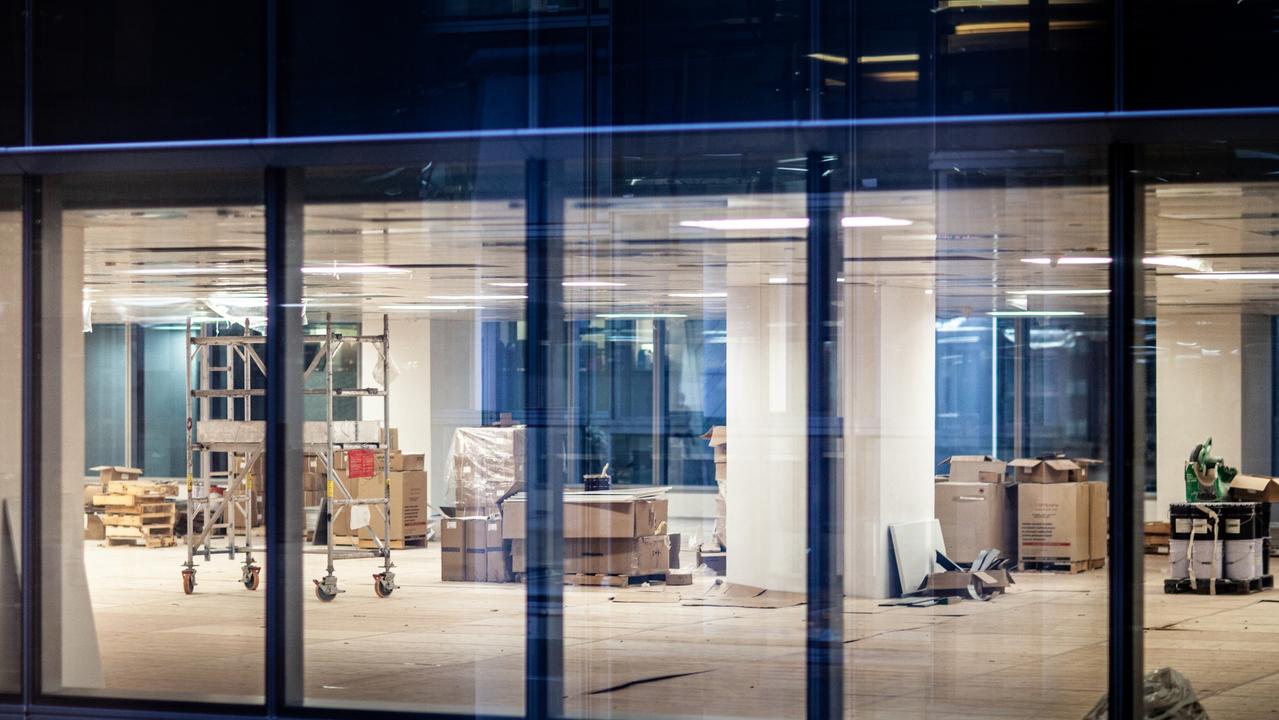Coronavirus: Australia’s yoyo future if COVID-19 is not eliminated
Australia is getting a glimpse of what life will be like over the next two years if the coronavirus is not eliminated, experts warn.

Experts have painted a grim picture of what life could look like in NSW and Victoria if the coronavirus is not brought under control.
The resurgence of the virus has led to increasing calls for authorities to adopt an elimination strategy rather than a suppression strategy.
All of Australia’s states and territories have managed to effectively eliminate the virus except for NSW and Victoria.
NSW got close before Victoria’s outbreak spread north, resulting in an increasing number of cases of community transmission in Sydney.
Both states would have to get active cases down to zero for at least two weeks before the virus is considered to be eliminated.
While some experts have noted that it’s unlikely the virus will be completely eliminated, if the number of cases was brought to zero, it means authorities can jump on any small outbreaks as they appear.
But NSW Premier Gladys Berejiklian said that elimination was not going to happen in NSW, pointing to the state’s population size.
“It’s not going to happen in New South Wales, it never will,” she told 7.30 on Tuesday night.
“We need to find a way in which we can coexist with the virus.”
She said people needed to earn a living and services needed to continue.
“Our strategy in New South Wales has always been to accept that as much as we would love to eliminate this virus, it’s just not possible,” she said.
Ms Berejiklian said she does not want to put the state into lockdown again.
“That’s not a path we want to take,” she said, adding that the state believed the best way to manage the pandemic was through a suppression strategy.
“Unfortunately what we all have to accept is that as restrictions have seized and as people start to go back to work and to daily lives, we will see case numbers increase,” she said.
“Every time we have an outbreak, we can’t afford to lockdown, reopen, lockdown, reopen. “That’s no way to live or to be able to instil confidence to businesses to keep employing people.
RELATED: Experts say suppression was always a mistake

RELATED: NSW identifies ‘patient zero’ in Crossroads outbreak
The Premier said NSW had quadrupled its health capacity, got protective equipment for frontline workers and had put processes in place to help contain the spread.
Some experts like infectious diseases physician, Professor Peter Collignon of the Australian National University, agree and believe that eliminating the virus is very unlikely. He also thinks other measures could be just as effective in controlling the virus as a lockdown.
“Victoria had the hardest lockdown in March and April but hasn’t got the best result and we are seeing the same thing in California,” he said.
“There’s the possibility of overdoing restriction.”
THE COST OF SUPPRESSION
But Stephen Duckett of the Grattan Institute, a former secretary of the federal health department, said while it was feasible the state’s most recent outbreak could be brought under control, other outbreaks may not be as easy to manage.
“It can happen (control of an outbreak) but this assumes that every outbreak is the same kind, something that you can jump on, and I think that’s unlikely because this pandemic looks like it will last a couple of years,” Mr Duckett said.
“If this does go on, then I think the likelihood of a large outbreak (like the one in Victoria) is quite high.”
While NSW is trying to avoid further lockdowns, Mr Duckett believes they will be likely if the state doesn’t eliminate the virus.
“If you do not achieve elimination, then you always run the risk of an outbreak, the only question is, is the outbreak going to be small or is it going to be large?”
Mr Duckett said NSW had been lucky so far and had a small outbreak, while Victoria had been unlucky and had a large outbreak.
“If there is a large outbreak, you are going to be in this yoyo economy going into lockdown again (possibly across the state),” he said. “If there is a small outbreak you might have a local lockdown. And that yoyo economy will continue for the foreseeable future.”
Mr Duckett said that if there was still virus circulating among the community, even at low levels, then there would be more infections, “it’s a mathematical certainty”.
RELATED: What could trigger stage 4 restrictions in Victoria
RELATED: Alternatives to lockdown in NSW

Economist and modeller Professor Quentin Grafton of Australian National University, agreed and said if a “low COVID” strategy was taken, eventually there would be other outbreaks and some of these would end up in lockdowns.
“I think it’s pretty clear what the future is, you can see it already,” he said.
“If we don’t go to elimination we’ll get these outbreaks, which are not trivial and cost people’s lives.”
Prof Grafton said a lockdown now with the aim of eliminating the virus would be more costly initially, because it may have to be for a longer period of time and involve harsher measures, but this would provide rewards in the long-term.
“People will be able to go out and not be concerned, and we won’t have lockdowns again,” he said.
He said the cost of Australia’s six-week lockdown had been estimated at $50 billion and the cost of Victoria’s lockdown was estimated around $10 billion.
“Those are large amounts of money and you can see why premiers don’t want to make those calls,” he said.
But he said the paradox of lockdown was that if states are able to achieve elimination the economic recovery is better than if there is still community transmission.
“If we don’t go for elimination of community transmission, then we get exactly what is happening right now, we get a rebound because this virus is highly contagious so if even there are low levels of virus it will come back as soon as we start to relax social distancing, it’s almost inevitable.”
Prof Grafton is one of a number of experts in economics, epidemiology and other related areas from Australia’s prestigious Group of Eight universities that recommended to the Federal Government in April that an elimination strategy was the best way forward.
“They didn’t go for that, they went for ‘controlled adaptation’, which is neither controlled or adaptation, which is why we have the consequences we have now, which is a yoyo relaxation lockdown.”
ELIMINATION IS POSSIBLE
Both Prof Grafton and Mr Duckett believe it is possible to eliminate the virus in NSW and Victoria, as other states and territories have done.
While Mr Duckett believes a statewide lockdown in NSW may be necessary as the source of the current outbreak — the Crossroads Hotel — is on a busy transit route, Prof Grafton said it probably wasn’t warranted right now.
“You want to have it as an option if required,” Prof Grafton said.
He said there was no reason why NSW couldn’t eliminate the virus.
“But it can’t happen if the premiers in NSW, Victoria and the Prime Minister don’t make elimination a goal,” he said.
“If we put the resources in we can get elimination. If it’s not a goal then we aren’t going to get it.
“We can see for ourselves what our fellow Australians are doing in Western Australia, that’s where I want to be.
“Over the next few days there will have to be some serious decisions made in NSW very soon about what to do next.”




